Telehealth is all the hype, but getting a patient on a call with their mouth wide open? I highly doubt that would cause much excitement on either side of the line. It’s like a virtual dentist appointment, minus the laughter and joy! 😄🦷
Why don’t we speak about some other (I promise not less exciting, but still practical) dental automations that can have a real impact on your practice’s bottom line and office workflow?
With technological advancements, dental practices can now streamline their processes and provide top-notch services to their patients. Here are all the hows and whys.
Top Takeaways:
- The Power of Dental Practice Automation: Implementing automation in dental practices can significantly streamline processes, reduce manual errors, and enhance overall efficiency. It not only saves time and cost but also improves patient experience and communication. Critical areas for automation can include patient intake, appointment scheduling, patient communications, electronic health records, insurance verification, inventory management, and patient billing.
- Choosing the Right Automation Tool: There are several tools available for dental practice automation, such as Dentrix, Eaglesoft, and Denticon. However, choosing the right tool should involve careful consideration of the specific needs and goals of your practice, including functionality, integration with existing systems, ease of use, and cost-effectiveness.
- Embracing the Future with White Label Health Components: Topflight’s ready-made components offer a seamless transition to automated processes, integrating with existing systems and offering ongoing support and maintenance. The components cover the most essential aspects of dental practice automation and is designed to scale with your practice, making it a cost-effective and strategic investment for a more sustainable and profitable future.
Table of Contents:
- What is Dental Practice Automation?
- The Need for Automation in Dental Practices
- Benefits of Dental Office Automation
- Dental Office Automation Challenges
- Types of Automation in Dental Practices
- Best Tools for Dental Practice Automation
- How to Choose the Right Automation Solution for Your Dental Practice?
- Dental Automation Implementation Roadmap
- How Topflight Can Help You Automate a Dental Practice?
What is Dental Practice Automation?
Dental practice automation refers to the use of technology and software to streamline and improve various processes in a dental office. This includes everything from appointment scheduling and patient communication to insurance claims processing and inventory management. By automating these tasks, dental practices can save time, reduce errors, and improve overall efficiency.

The Need for Automation in Dental Practices
As technology continues to advance and patient expectations rise, the need for automation in dental practices has become increasingly apparent. Manual processes that were once manageable are now time-consuming and prone to errors.
In addition, patients expect a certain level of convenience and communication from their healthcare providers. By implementing automation software, dental practices can meet these expectations and stay competitive in today’s fast-paced world.
Benefits of Dental Office Automation
There are numerous benefits to implementing dental office automation. Some of the most significant include:
- Time and Cost Savings: Automation reduces the need for manual labor, saving both time and money for dental practices. This allows staff to focus on more important tasks, such as providing quality care to patients.
- Improved Efficiency: With automation, repetitive and time-consuming tasks can be completed quickly and accurately. This leads to a more efficient workflow and increased productivity.
- Enhanced Patient Experience: Automation allows for better communication with patients, such as appointment reminders and post-visit follow-ups. This can improve patient satisfaction and retention.
- Reduced Errors: Manual processes are prone to human error, which can lead to costly mistakes. Automation reduces the risk of errors, resulting in more accurate records and claims processing.
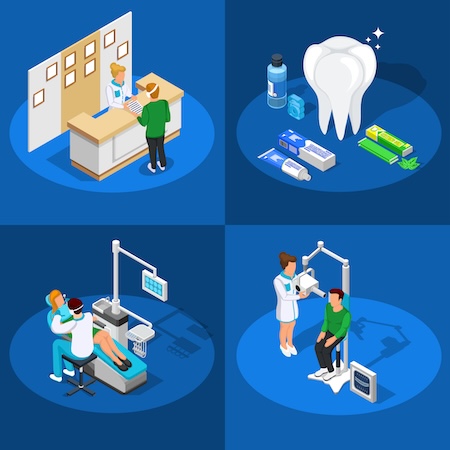
Without dental practice automation, numerous challenges can hamper the smooth operation of a dental office, leading to inefficiencies and customer dissatisfaction. These hurdles not only disrupt the daily workflow but can also negatively impact the practice’s overall productivity and profitability. Among the numerous issues that might arise, some of the most significant ones include:
- Increased No-Shows: Without automatic appointment reminders, no-show rates can rise significantly, causing a loss of potential revenue.
- Manual Errors: Manual handling of patient records and insurance claims can lead to costly errors and inconsistencies.
- Time-Consuming Administrative Tasks: Staff members may get overwhelmed with time-consuming administrative tasks such as scheduling, insurance verification, and billing, leaving less time for patient care.
- Poor Patient Communication: Lack of proper communication channels can lead to missed messages or delayed responses, affecting patient satisfaction and retention.
- Inventory Management Problems: Without automation, tracking and managing inventory can become a complex and error-prone process. This can lead to shortages, overstocking, or expired supplies.
Dental Office Automation Challenges
While there are many benefits to automating a dental practice, it is not without its challenges. Some common hurdles include:
- Resistance to Change: Implementing automation often requires changes in processes and workflows, which can be met with resistance from staff who are comfortable with the current system.
- Integration Issues: Introducing new software can be complicated and may not always integrate seamlessly with existing systems. This can cause disruptions and delays in productivity.
- Cost of Implementation: While automation can save money in the long run, there are upfront costs associated with implementing new software and training staff. This can be a barrier for smaller dental practices with limited budgets.
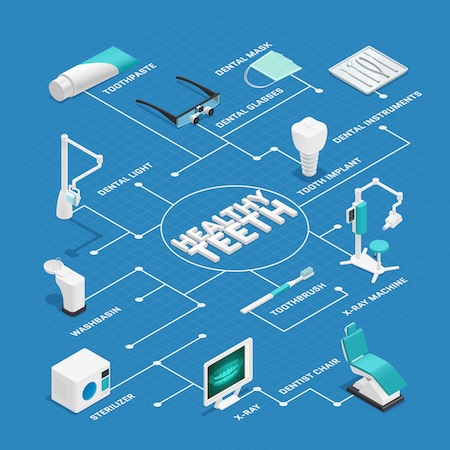
With an understanding of the benefits and potential challenges, it’s important to delve into the different types of dental automation technology that can transform your practice.
Types of Automation in Dental Practices
Dental office automation should be comprehensively implemented to span both patients’ and providers’ experiences. This all-encompassing approach not only streamlines administrative tasks but also enhances the overall experience for everyone involved.
Let’s take a closer look at this dental automation ecosystem.
Patient-centric automation
There are various types of automation that can be implemented in dental practices, including:
- Patient intake forms: Implementing smart forms (including consent forms) and allowing patients to fill them out online saves time for both the patient and staff.
- Appointment Scheduling: Automated patient scheduling solutions streamline the process and reduce the risk of human error. Patients can easily schedule appointments online without having to call the office.
- Patient Communication: By automating patient communication, practices can send appointment reminders, post-visit surveys, and other important information through emails or text messages.
- Automated Reminders: One of the key aspects of patient communication is reminders. Automatic reminders can serve manifold purposes within a dental practice. They not only alert patients about upcoming appointments, thereby reducing no-shows, but also remind them of pending payments or the need for regular check-ups and cleanings.
NB Re: this issue with scheduling an appointment I mentioned in the beginning. The real problem was the fact they sent a manual reminder. Could they have set up at least a couple of reminders sent automatically a week and then a day in advance? Bearing the same message with a personal touch? And an option for me to self-reschedule? Absolutely. That’s why dental automations rule.
- Educational content: Automation platforms can also be used to send educational content to patients, such as oral hygiene tips or information about new treatments. This helps engage patients and improves their understanding of their dental health.
- Intelligent chatbots: Chatbots are becoming increasingly popular in the healthcare industry. They can provide quick responses to common patient inquiries and help schedule appointments, reducing the workload on staff.
All these are typically found in a patient portal or a smartphone application.
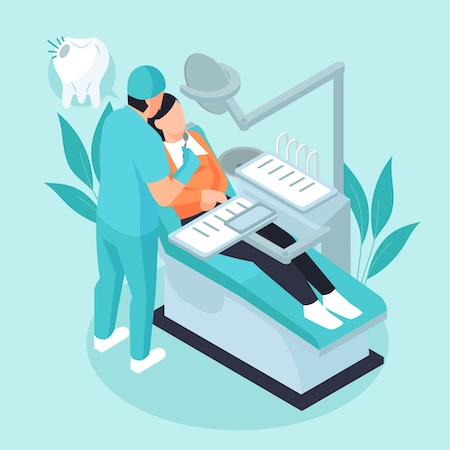
Provider-centric automation
For dental care providers, automation proves instrumental in streamlining behind-the-scenes operations. Here are some areas where automation can be effectively employed:
- Electronic Health Records (EHR): By shifting from manual to electronic health records, dental practices can ensure efficient record-keeping, better access to patient histories, and more accurate diagnoses and treatment plans. This ultimately leads to an improvement in the quality of care provided.
- Diagnosing: Dental practice automation allows for more accurate and efficient diagnoses. With the help of digital imaging and advanced software, practitioners can detect dental issues with greater precision. Automated tools can also assist in tracking a patient’s oral health over time, making it easier to identify changes or trends that could indicate potential health issues. Furthermore, the data collected can be easily accessed and shared among healthcare providers, facilitating a more comprehensive and coordinated approach to patient care.
- Insurance Verification: The automation of insurance verification simplifies this time-consuming process. With an automated solution, staff can quickly verify patients’ insurance eligibility and benefits, saving time and reducing errors.
- Inventory Management: An automated inventory management system can help practices track and control inventory levels. This reduces the likelihood of overstocking or running out of essential supplies, thus optimizing the cost associated with inventory control.
- Billing and Claims Processing: Automation can also be utilized to manage revenue cycle management and insurance claims (including automated medical coding). Automated systems can generate and send invoices, process payments, and run insurance claim automation more accurately and efficiently than manual methods.
- Marketing and reactivation campaigns: Automation platforms can also be utilized to run targeted marketing and reactivation campaigns. By analyzing patient data, practices can identify patients who are due for appointments or have not visited in a while and send personalized messages to encourage them to schedule an appointment.
- Treatment plan follow-ups: An automated system can send reminders to patients about recommended follow-up appointments or treatments, ensuring that important procedures are not overlooked.
- Reporting and analytics: Automation software can generate reports and provide analytics on various aspects of the practice, such as patient flow, revenue growth, and the most popular services. This data can be used to make informed business decisions and improve overall performance.
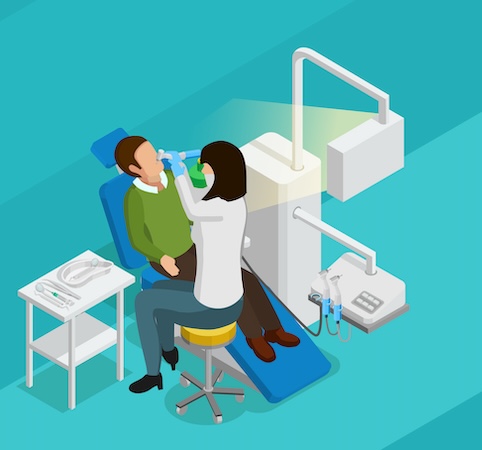
Related: Teledentistry Software
Trailblazers, anyone?
And finally, here are a few ideas for the bold ones:
- AI-Assisted Diagnostics: My personal experience with dental automation was quite remarkable. I once underwent a 3D dental scan, a non-invasive procedure that involved the use of cutting-edge imaging technology. Following the scan, a comprehensive 3D model of my dental structure was created, which facilitated a thorough examination of each tooth from a variety of angles. What’s fascinating is how swiftly the dentist came up with a treatment plan for my teeth based on an AI analysis. The AI-driven software was able to accurately identify areas of concern and suggest the ideal course of action. This not only resulted in a quick and accurate diagnosis but also a personalized treatment plan that addressed all my dental challenges comprehensively. Such intelligent automations can revolutionize dental practice, making it more efficient, accurate, and patient-friendly.
- Augmented Reality (AR) and Virtual Reality (VR) in Dentistry: The integration of AR and VR technology into dental practice brings education and treatment planning to an entirely new level. Imagine a scenario where a child is apprehensive about an upcoming dental procedure. With VR, we can take this child on a virtual tour inside their own mouth, showing them exactly what the dentist will be doing. This serves a dual purpose – it not only demystifies the procedure and alleviates fear but also serves as an excellent educational opportunity. The child becomes more engaged in their dental health, gaining a better understanding of the importance of oral hygiene in a fun and interactive manner. For the dental practitioner, it offers a platform for precise treatment planning and patient communication. This level of patient engagement and education is unprecedented and is just another example of how dental office automation can transcend conventional boundaries in patient care.
- Full Front-Desk Automation: Dental office automation doesn’t stop at the aforementioned areas. It can extend even further to provide a fully automated front-desk experience. Take a traditional dental office visit, for instance. Patients arrive, check in at the front desk, fill out paperwork, and then wait to be called in. Now, imagine a scenario where automation takes care of these initial steps. Patients could check in using a self-service kiosk, complete their paperwork digitally on a tablet, and be automatically alerted when it’s time for their appointment. Front-desk staff, instead of dealing with these administrative tasks, can focus on providing excellent patient service and enhancing the overall patient experience.
By striking a balance between patient-centric and provider-centric automation, practices can optimize their operations and provide superior and more cost-efficient care.
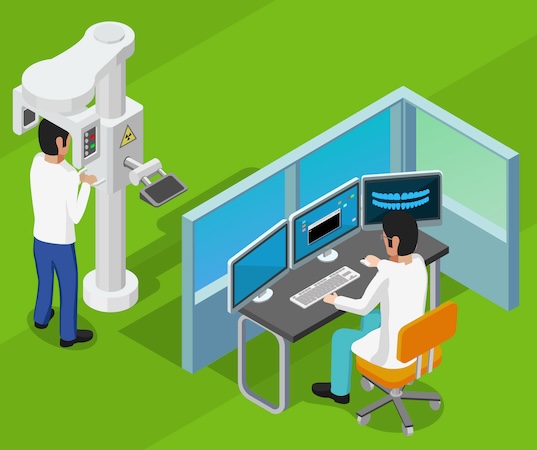
Indeed, with such a plethora of options, it might seem overwhelming to decide where to start your dental practice automation journey. Skip to the last section to check the automation options that we think offer the maximum return on investment.
Best Tools for Dental Practice Automation
There are many tools available to help automate a dental practice. Some popular options include:
- Dentrix: This comprehensive software offers solutions for appointment scheduling, patient communication, billing, and EHR. It also integrates with various third-party tools and has a mobile app for on-the-go access.
- Eaglesoft: Another popular option, Eaglesoft offers features such as appointment reminders, insurance claims processing, and digital imaging. It is known for its user-friendly interface and customizable options.
- Denticon: This cloud-based software allows for easy access to patient information, scheduling, and billing from any location. It also offers reporting and analytics tools to track practice performance.
How to Choose the Right Automation Solution for Your Dental Practice?
When choosing an automation solution for your dental practice, it is important to consider the specific needs and goals of your practice. Some factors to consider include:
- Functionality: Make a list of the features and tools that are most important for your practice. This will help narrow down your options.
- Integration: Consider whether the software can integrate with your existing systems and tools (e.g., a practice management platform). This will help avoid disruptions and delays.
- Ease of Use: Look for a user-friendly interface to ensure efficient adoption by staff members.
- Cost: Determine your budget and compare the costs of different options. Keep in mind that while some solutions may have a higher upfront cost, they may also offer more comprehensive features and potential long-term savings. More on medical app development cost in our dedicated blog.
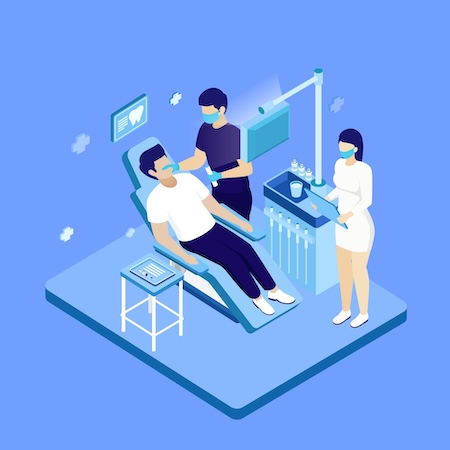
Dental Automation Implementation Roadmap
To ensure a successful implementation, it is important to have a clear roadmap in place. This can include the following steps:
- Assessment: Evaluate current processes and determine where automation could be most beneficial. This can help prioritize which areas to automate first.
- Research: Research different automation solutions and determine which one best fits the needs and budget of your practice. For example, does a system include medical billing automation options?
- Training: Ensure that staff members are properly trained on how to use the new software. This will help avoid potential issues during the transition.
- Testing and Feedback: Before fully implementing automation, it is important to test the software and gather feedback from staff. This will help identify any potential issues or areas for improvement.
- Rollout Plan: Develop a plan for gradually introducing automation into the practice. This may involve implementing one tool at a time or phasing in different features over time.
- Ongoing Support and Maintenance: Automation systems require ongoing support and maintenance to ensure they continue to run smoothly. This may involve periodic updates or troubleshooting, so it is important to have a plan in place for continued support.
How Topflight Can Help You Automate a Dental Practice?
Topflight’s ready-made health components are a comprehensive solution that can revolutionize the way a dental practice operates, bringing together all the benefits of dental practice automation. This robust solution caters to the unique needs of the dental industry, offering smart automation and integration with your existing systems, making the transition seamless and efficient.
The platform covers essential aspects of dental practice automation, such as:
- appointment scheduling and automated reminders
- patient-provider communication
- online payments
- chatbot assistant
It streamlines your office operations, enhances patient engagement, and minimizes errors, thereby improving efficiency and saving valuable time and resources.
The user-friendly interface ensures easy adoption by your staff members, reducing the learning curve and resistance to change. Topflight’s solution is cost-effective, with a reasonable upfront cost that can lead to significant long-term savings. It is designed to scale with your practice and can accommodate future growth with ease.
What sets Topflight’s white label health components apart is its commitment to ongoing support and maintenance. Our team is dedicated to ensuring that your dental practice runs smoothly, providing regular updates and prompt troubleshooting whenever necessary.
Using our custom pre-built components, dental practices can experience the true power of dental automation – improved patient satisfaction, enhanced efficiency, reduced errors, and significant cost savings. As a dental practice leader, investing in this software is a strategic move towards a more sustainable and profitable future.
Frequently Asked Questions
How easy is it to transition to Topflight's white label health components?
Transitioning to Topflight’s health modules is relatively straightforward. The solution integrates seamlessly with existing systems, and our team will work closely with you to ensure a smooth transition. Our user-friendly interface also helps in rapid adoption by your staff.
What sort of support can I expect after implementing Topflight's solution?
The beauty of Topflight’s components is its commitment to ongoing support. Our team is always on standby for regular updates and prompt troubleshooting, ensuring that your dental practice runs smoothly and efficiently.
Will Topflight's white-label components be cost-effective for my dental practice in the long term?
Absolutely. While there are upfront costs associated with implementing the platform, the enhanced efficiency, reduced errors, and time savings lead to significant long-term savings. The platform is also scalable, so it can grow with your practice, offering further cost benefits.